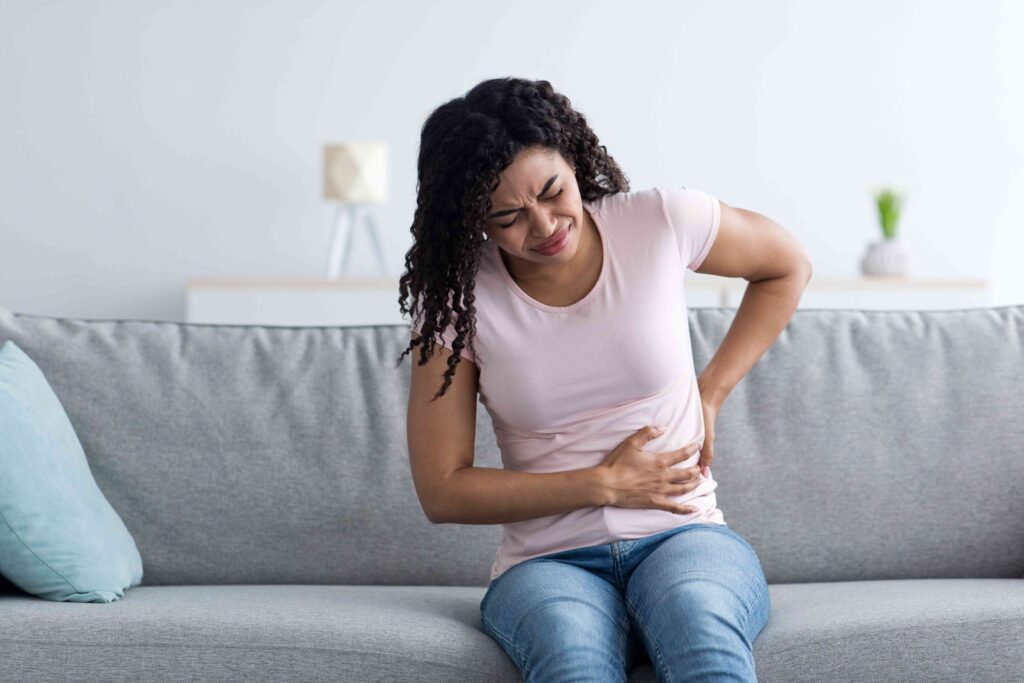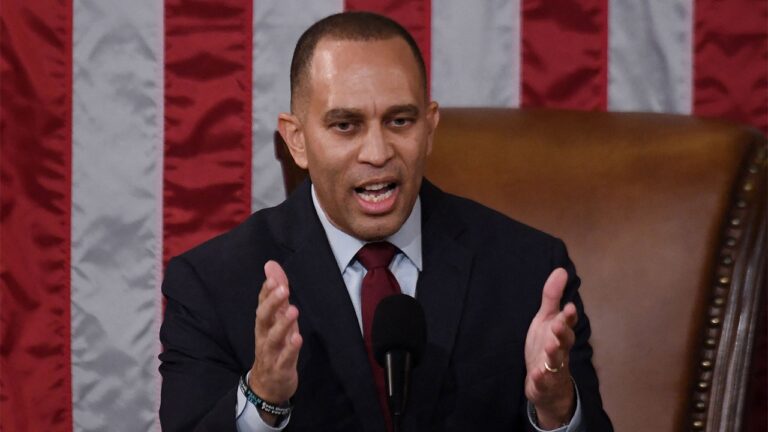:max_bytes(150000):strip_icc():format(jpeg)/health-GettyImages-1337891278-b9484169749b482e9e802a0cdb5536b3.jpg)
Pain under the left rib cage is common, and several health conditions can cause it. Discomfort in this area can range from mild to severe and may occur with other symptoms, such as nausea, vomiting, fever, or shortness of breath.
While it’s not always a sign of something serious, this part of your abdomen houses several organs and part of the gastrointestinal tract, so seeing a healthcare provider for recurrent, persistent, or severe pain under the left rib cage is important.
Knowing which organs and structures are in the area under or around your left rib cage (the left hypochondrium or left hypochondriac region) can help you and your healthcare provider identify what might be causing your pain.
- Spleen: Sitting just below the left rib cage, the spleen filters blood and supports immune function to help fight infections.
- Stomach: This large, muscular organ plays a key role in digestion and breaks down food. The upper portion of the stomach sits under the left rib cage.
- Pancreas: Stretching horizontally across the abdomen and located behind the stomach, the pancreas is a gland that produces digestive enzymes and hormones, including insulin.
- Left kidney: One of two bean-shaped organs on either side of the spine, the left kidney sits behind the stomach, slightly above the waistline. It filters waste products from the blood, produces urine, and makes hormones that control blood pressure and stimulate red blood cell production.
- Colon (large intestine): The descending colon is part of the large intestine and runs down the left side of the abdomen. It absorbs water from partially digested food and moves waste down to the rectum.
This area also contains muscles, blood vessels, and nerves that support and protect these organs. Problems with organs or supporting structures in or around the left rib cage region can contribute to pain and discomfort.
There are several possible causes of pain under the left rib cage, ranging from mild to serious. Understanding the exact cause of your pain can help you and your healthcare team know what treatments can help alleviate symptoms.
Digestive Conditions
Acute (short-term) digestive concerns and chronic (long-term) digestive disorders are common causes of pain under the left rib cage. These include:
- Gas: Eating too quickly, drinking carbonated beverages, or consuming gas-producing foods (like beans and cabbage) can cause gas buildup in the stomach or intestines, causing sharp or cramping pain, belching, bloating, and flatulence (farting).
- Gastroesophageal reflux disease (GERD): This condition causes stomach acid to flow into the esophagus (food pipe), causing heartburn and chest pain that can radiate to under the left rib cage. GERD-related pain is typically worse after eating or when lying down.
- Constipation: Having three or fewer bowel movements weekly causes stool to build up in the large intestine (colon), leading to abdominal discomfort and bloating. Depending on the severity of constipation, cramping pain may develop and extend from the lower abdomen to the left side under the ribs.
- Irritable bowel syndrome (IBS): This digestive disorder affects the large intestine and causes abdominal pain, bloating, and changes in bowel habits, such as diarrhea and constipation. People with IBS often experience left-sided abdominal pain and cramping that comes and goes in waves.
- Ulcerative colitis (UC): This form of inflammatory bowel disease (IBD) can cause pain in the upper left side of the abdomen when inflammation causes ulcers (open sores) in the descending colon.
- Gastritis: This inflammation of the stomach lining can cause pain in the upper left side of the body under the ribs. Other symptoms include indigestion, nausea or vomiting, loss of appetite, feeling full too soon, and uncomfortable bloating. Gastritis often develops from Helicobacter pylori (H. pylori) bacterial infection or long-term nonsteroidal anti-inflammatory drug (NSAID) use, such as Advil (ibuprofen) and Aleve (naproxen).
- Peptic ulcers: A peptic ulcer is an open sore that develops in the lining of the stomach or duodenum (the first part of the small intestine). Peptic ulcers can cause a dull or burning pain in the upper abdomen just below the rib cage that comes and goes, often worsening when the stomach is empty or when lying down.
Costochondritis
Costochondritis causes inflammation of costal cartilage—the thick, flexible tissue connecting the ribs to the breastbone.
Pain related to costochondritis often feels sharp and can radiate toward the back or down below the ribs in the stomach area. The pain can worsen with movement, deep breathing, coughing, and sneezing. The affected area can also feel tender when you apply pressure to your ribs.
This pain is often mistaken for cardiovascular-related pain, such as a heart attack. Fortunately, it is benign (harmless) and typically resolves within four weeks. Overuse or acute injuries and inflammatory conditions, such as fibromyalgia, ankylosing spondylitis, and systemic lupus erythematosus (lupus), are common causes of costochondritis.
Spleen Enlargement or Rupture
The spleen is a fist-sized organ tucked behind the rib cage on the left side of the body. When it enlarges (medically known as splenomegaly), it can cause a dull, aching pain under the left rib cage. Some people also feel full after eating only small amounts of food, and others may experience pain that radiates to the left shoulder.
Trauma or injury to the left side of the body can cause an enlarged spleen to rupture, leading to severe, sharp pain that requires prompt medical attention.
Pancreatitis
Pancreatitis is the inflammation of the pancreas. It develops when digestive enzymes damage the pancreas, usually due to gallstones or excessive alcohol consumption. Acute pancreatitis causes severe upper abdominal pain that radiates to the back. Other symptoms include fever, nausea and vomiting, rapid heart rate, and a tender or swollen upper abdomen on the left side.
Chronic pancreatitis develops when long-term inflammation damages or scars the pancreas. It worsens over time, often causing upper abdominal pain that comes and goes for hours or days at a time or is constant and severe.
Kidney Stones
Kidney stones are hard deposits in the kidneys that form when there are high amounts of certain minerals and chemicals in urine, such as calcium oxalate and uric acid. Dehydration, high sugar or salt consumption, and too much or too little exercise can cause kidney stones.
Pain from kidney stones is often sharp or stabbing, beginning in the back or side and radiating to the groin. It typically resolves once the kidney stone passes through the urinary tract and leaves the body through urination.
When a kidney stone gets stuck in the urinary tract, it blocks urine flow, causing excruciating and unrelenting pain, vomiting, fever, cloudy urine, blood in the urine, and burning sensations when peeing.
Musculoskeletal Causes
Injuries or inflammation affecting the left side’s rib bones, muscles, tendons, or ligaments will primarily cause pain in the ribs and connecting muscles. These include conditions include:
- Slipping rib syndrome: This rare condition occurs when the ligaments holding the lower ribs in place weaken, allowing the ribs to move out of position and causing pain. Chest injuries from a fall, accident, or rapid twisting or lifting motion can cause slipping rib syndrome. Symptoms include severe pain below the ribs that worsens when laughing, twisting, coughing, or bending. The pain may also occur with a clicking, popping, or slipping sensation.
- Rib fracture: A broken rib on the left side can cause pain that worsens with deep breathing or coughing. It requires prompt medical attention because a fractured rib can sometimes puncture or damage nearby structures, including the lungs.
- Intercostal muscle strain: The intercostal muscles are located in the spaces between the ribs, helping move the ribs when you breathe. Overuse or overstretching these muscles can cause a strain (pulled muscle), causing pain and tenderness.
Other Potential Causes
Other possible causes of pain under the left rib cage include:
- Heart attack: A heart attack—when blood flow to the heart is blocked—can cause intense squeezing chest pain or pressure that radiates to the abdomen, jaw, arms, neck, or shoulders. Other symptoms may include cold sweats, nausea and vomiting, and shortness of breath.
- Pleurisy: Inflammation of the lining of the lungs (pleura) can cause dull, achy, or burning pain under the ribs that worsens when breathing deeply, coughing, or sneezing. Respiratory infections, chest injuries, autoimmune conditions (e.g., rheumatoid arthritis), and certain cancers can cause pleurisy.
- Pneumonia: Viral, bacterial, or fungal infections cause inflammation and fluid buildup in the lungs, leading to symptoms like chest pain, difficulty breathing, fever, and cough. Pneumonia affecting the lower lobes of the left lung can especially cause pain under the left rib.
- Aortic aneurysm: An aortic aneurysm is a balloon-like bulge in the wall of the aorta, the large artery that carries blood from the heart to the chest and torso. An aortic aneurysm can cause sharp, sudden pain in the chest, back, or side, shortness of breath, and difficulty breathing.
- Pneumothorax (collapsed lung): Pneumothorax occurs when air leaks out of the lungs and into the space between the lung and chest wall. Pressure makes it hard for the lungs to expand, leading to sharp chest pain that can extend to the ribs, shortness of breath, and fatigue.
Monitoring pain under the left rib cage is important. Some causes, like gas or muscle strain, resolve without treatment. It’s a good idea to see a healthcare provider for pain that lasts more than a few days, is severe, or affects your ability to carry out daily activities.
You should also see a healthcare provider if you experience lower rib pain with any of the following symptoms:
- Difficulty breathing or shortness of breath
- Pain that continues or worsens
- Sharp pain when breathing
- Fever
Pain under the left rib cage is sometimes a sign of a serious, life-threatening condition, such as a heart attack. Call 911 or go to the nearest emergency room if you experience pain under the left rib cage and any of the following symptoms:
- Sudden squeezing, tightening, crushing pain or pressure in your chest
- Pain that radiates (spreads) to your left arm, jaw, or between your shoulder blades
- Nausea or vomiting
- Dizziness
To diagnose the cause of pain under the left rib cage, healthcare providers will review your medical history and symptoms and perform a physical examination. Your healthcare provider will want to know when the pain started, what activities worsen or relieve the pain, and whether you have other symptoms that occur with the pain.
During the physical exam, your provider will listen to your heart and lungs with a stethoscope and palpate (press on) your abdomen to check for an enlarged spleen. They will also examine your ribs and back for signs of injury, like swelling and redness.
Depending on your symptoms and what they observe during the physical exam, your provider may order additional diagnostic tests to help identify what’s causing the pain. These tests may include:
- Blood tests: Measure your blood oxygen level and check for infection, inflammation markers, or heart problems (e.g., heart attack)
- Imaging tests: Use technology like ultrasounds, chest X-rays, computed tomography (CT), and magnetic resonance imaging (MRI) scans to help visualize the organs and supporting structures in the chest and abdomen to identify abnormalities or injuries
- Endoscopy: Involves using a thin, flexible tube with a camera to examine the inside of your upper digestive tract, including the stomach and esophagus, to look for inflammation, ulcers, and other abnormalities
- Sigmoidoscopy or colonoscopy: Uses a flexible tube with a camera to view the rectum and large intestine to look for signs of inflammation, ulceration, or other signs of concern
- Electrocardiogram (EKG): Records the heart’s electrical activity to evaluate heart function and diagnose a heart attack or other heart problems
Treatment for pain under the left rib cage depends on the underlying cause of your discomfort. Once your provider determines a diagnosis, they can develop a treatment plan that helps relieve your pain. Treatment options vary but may include home remedies, medical treatments, or both.
Home Remedies
Self-care measures at home can help relieve some causes of pain under the left rib cage. You can:
- Take over-the-counter (OTC) medications like Advil (ibuprofen) to relieve pain and inflammation
- Get rest to allow your body to heal, especially after a muscle strain or injury
- Try gentle stretches to relieve muscle pain and improve flexibility
- Apply an ice pack to reduce swelling or a heating pad to increase blood flow to the painful area
- Limit the intake of acidic, spicy, and high-fat foods if your pain is due to a digestive disorder
Medical Treatments
Many conditions associated with pain under the left rib cage require medical treatments. Some conditions require only short-term treatment to resolve the issue, while others require lifelong management. Your treatment plan may include:
- Prescription medications: Depending on the underlying cause, your healthcare provider may prescribe medications to treat specific conditions, such as nonsteroidal anti-inflammatory drugs (NSAIDs) or corticosteroids to reduce inflammation and relieve pain, proton pump inhibitors or histamine-2 antagonists (H2 blockers) for gastritis or GERD, or immunomodulators or biologics that control the immune system to treat IBD.
- Shockwave lithotripsy: This noninvasive procedure uses high-energy sound waves to break kidney stones into fragments, making them easier to pass through urination.
- Surgery: Surgical procedures may be necessary to treat a ruptured aortic aneurysm, pneumothorax, pancreatitis, an enlarged or ruptured spleen, or a large kidney stone.
Pain under the left rib cage has many possible causes, such as underlying digestive disorders, an enlarged spleen, kidney stones, and muscle strain or injury.
Because left-sided rib pain has many possible causes and occurs in an area with several essential organs, seeing a healthcare provider about your pain is important. They can help you identify what’s causing your pain and offer treatment options to help you feel better and prevent complications.













